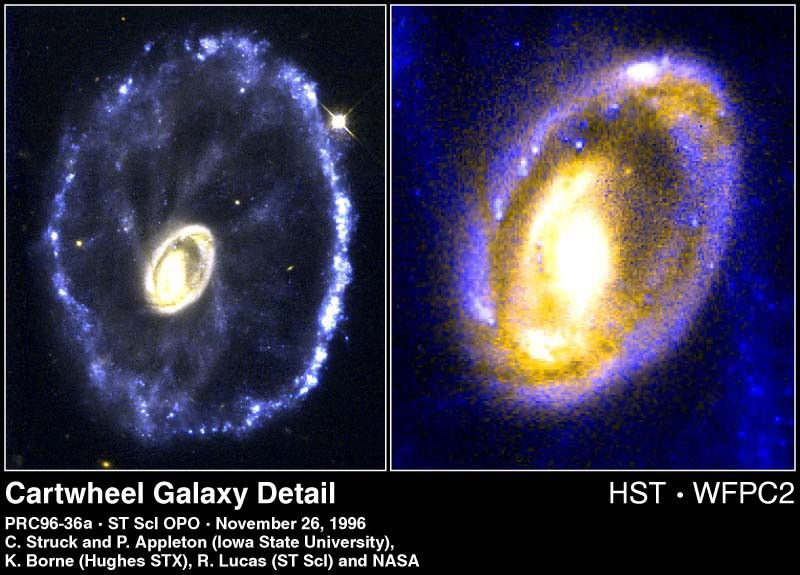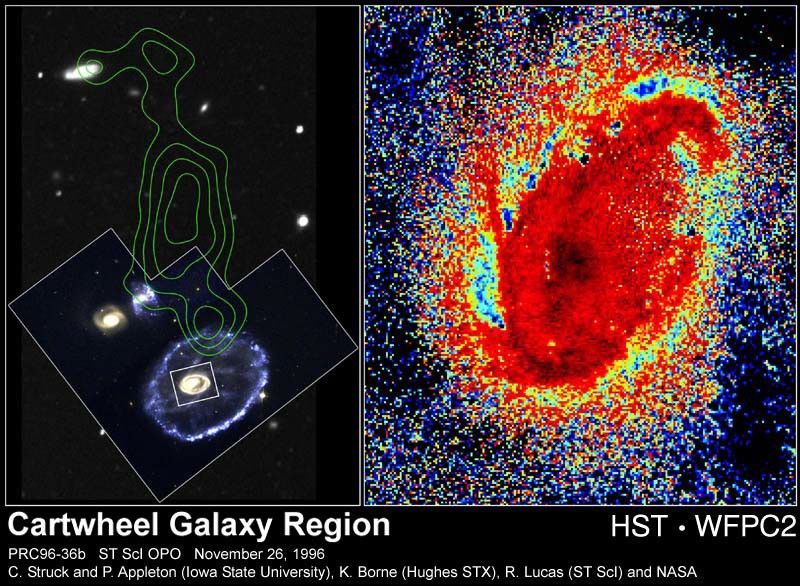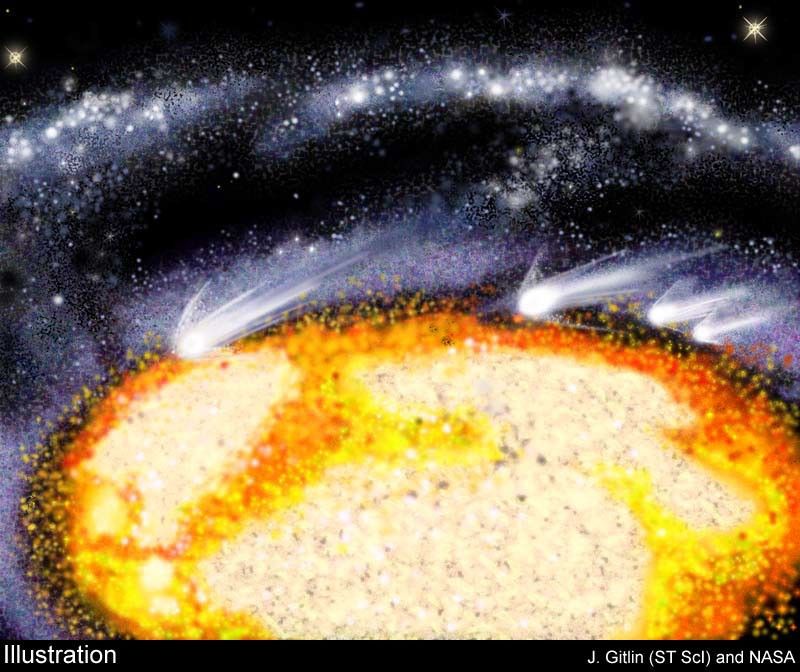Analyses of dramatic images by NASA's Hubble Space Telescope reveal immense comet-shaped knots of gas in the heart of the Cartwheel galaxy, a peculiar looking wagon-wheel shaped galaxy which collided with another galaxy.
Their discovery may eventually help explain why the center of the Cartwheel galaxy has little star formation, and what causes the unusual spoke pattern between the bright outer ring of young stars and the mysterious, dusty galactic nucleus.
A team of astronomers used Hubble's Wide Field Planetary Camera 2 to probe the nucleus of the Cartwheel galaxy, which has an unusual network of dust lanes but lacks giant starbirth regions found in our own Milky Way. They were surprised to find comet-like features crossing a dust lane.
The objects uncovered by Hubble really aren't comets because they are far too huge. The "heads" are a few hundred light-years across and the tails are more than 1,000 light-years long, the longest being nearly 5,000 light-years long.
The "comet heads" are most likely vast clouds of molecular hydrogen, similar to those found in our own Milky Way galaxy. The "tails" are an incandescent wake of hot glowing gasses and possible newborn stars, as suggested by their bluish color in the Hubble images.
The structures look like comets because they probably result from a collision between high speed and slower moving material. This creates an arrowhead-shaped pattern called a bow-shock, similar to the wake of a boat speeding across a lake. Researchers conclude the maelstrom was kicked up by a nearly head-on collision between the Cartwheel galaxy and a smaller galaxy 200 million years ago. This makes the Cartwheel galaxy a unique laboratory for studying supersonic collisions between massive clouds and large scale "ripples" of gas created by the collision.
One possible explanation for the features results from the fact that during the collision gas clouds are pulled inward, but afterwards they are released to oscillate around their original position like a plucked guitar string. (These oscillations are around the balance point between centrifugal and gravitational forces). Comets may result when large clouds plowing through space at nearly 700,000 miles per hour, smash into a ring of gas and dust pushing outwards as part of the next oscillation.
A second explanation is that the spokes and "comets" may represent a later stage where material begins falling back into the galaxy - a phenomena not seen in most other ring-shaped galaxies younger than the Cartwheel. In this scenario, the molecular cloud "comet heads" were first splashed out from the galaxy's plane, and, like a baseball tossed into the air, the clouds slowed and then fell back into the galaxy. As they plummet, they locally heat interstellar gas to more than a million degrees Fahrenheit.
The new findings were made by Curt Struck, Philip Appleton (Iowa State University), Kirk Borne (Hughes STX Corporation), and Ray Lucas (Space Telescope Science Institute). Their results appear in the November issue of the Astronomical Journal.
The puzzling findings call for a variety of follow-on observations, including spectroscopy of the "comets" and X-ray observations to search for shocked gas in the nucleus.
The Cartwheel galaxy is located 500 million light-years away in the constellation Sculptor.

































